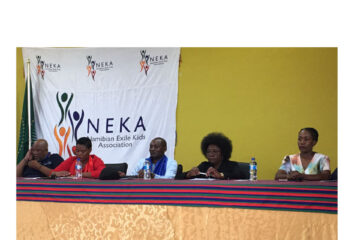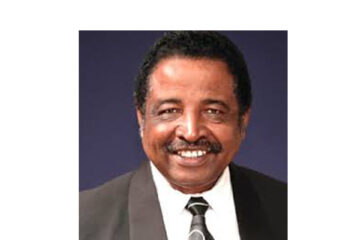Martin Endjala
The Ministry of Environment Tourism and Forestry will store the horns which it dehorned from problematic and ageing rhinos while they seek permission from international organizations regulating the trade of wildlife products to sell them and make revenue for the country.
This is according to MEFT spokesperson Romeo Muyunda who said that the horns from the dehorning process are going to be kept and stored safely by the Ministry.
He says the funds will be used for the security of the species and that at the moment they do not have the approval as of yet.
Muyunda did not reveal how much money the horns in storage would generate, nor could he confirm the amount a single horn may be sold for. He however said it will also depend on the method the Ministry would use to sell the horns.
Meanwhile, the Minister of Environment Tourism and Forestry, Pohamba Shifeta during the dehorning of rhinos last week at the Etosha National Park said that although the process seems cruel, it is necessary for the wellbeing of the rhinos.
The horns can also be sold and the revenue obtained can be ploughed back into the community through conservancy programmes.
This year alone, Namibia lost about 48 rhinos to poaching. poachers are reportedly moving away from illegally killing rhinos in well-protected national parks and are targeting private and custodianship farms.
The dehorning of rhinos is therefore to deter poachers and this year alone the country has managed to dehorn about 154 rhinos and this is just a small fraction as the cost is an issue according to Muyunda.
The effort of finding the animals and the costs associated with the immobilization process is cited as one of the reasons why Namibia is home to the largest population of free-roaming black rhinos in the world.
Muyunda stressed that the aggressive implementation by MEFT to dehorn rhinos continues to save the endangered species from being illegally slaughtered for its horns.
Horns are removed from rhinos to make them less attractive to poachers, Muyunda explained.
Since January MEFT has immobilized 134 black rhinos, of which 131 were dehorned and 24 white rhinos of which 23 were dehorned.
According to Muyunda, the total number of dehorned rhinos since 2018 is 932. The country has also taken measures to improve security and carry out other anti-poaching initiatives.
Namibia was the first country to use dehorning to protect rhinos from being poached in the late 1980s. The measure is said to have contributed significantly to reducing poaching losses to zero around that time.
The move was terminated in 1995 but restarted in 2014 due to rising poaching levels and has been carried out regularly ever since.
Furthermore, Namibia holds more than a third of Africa’s black rhino population and is a stronghold for the Southwestern black rhino subspecies.
Namibia’s Etosha National Park is home to the world’s largest population of black rhinos and, when incorporating populations of the Waterberg Plateau Park and Kunene Region, makes up most of the country’s black rhinos.
Additionally, smaller populations can be found in the Namib-Naukluft, Khaudum and Mangetti National Parks, Hardap Game Reserve, and various private reserves and community conservancies under the Black Rhino Custodianship Programme.




